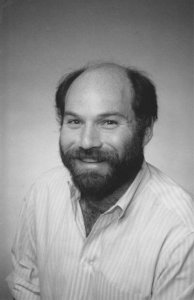
Carl Kesselman wants to make giant databases and special instruments available over the Grid
New Center for Grid Technologies at USC’s Information Sciences Institute Will Develop Ways to Share Resources Via High Speed Networking.
USC Information Sciences Institute Executive Director Herb Schorr today announced the creation of a new center devoted to research and development of the technology of grid computing.Schorr designated Carl Kesselman, Ph.D., as director of the new organization, the Center for Grid Technologies. “Dr. Kesselman has been at the forefront of grid research for years,” said Schorr. “He is the logical man to head our new center, which we hope will perfect the highly promising techniques of grid infrastructure and get these new tools into the hands of the scientific, engineering, and even business communities.”
Kesselman explained that Grid technologies make it possible for geographically distributed teams to share a wide variety of resources. across geographically distributed teams.
“Just as an energy grid supplies electricity on demand to users everywhere, so a grid will supply permit access to many different types of resources on demand. By enabling distributed teams to share resources such as the largest supercomputers, storage systems, data collections, and unique or extremely expensive scientific instruments such as microscopes, we can have a major impact on how many complex problems are solved.” Kesselman explained.
“The World Wide Web,” Kesselman continued, “has facilitated unprecedented ways of speedy global information sharing sharing information. The Grid will build on this by allowing facilitating the global sharing not just information but of tangible assets to be used at a distance..”
In addition, pPrograms and very large databases that now are geographically confined will be grid-sharable, said Kesselman. “You can’t really share programs via the web, ” he said, “aand the types of data we are talking about are very large data sets that are inputs to various types of analysis — often by the programs being shared. We’re talking about making terabytes available here.”
A terabyte is one million megabytes of date, or roughly the capacity of 1000 new-generation CDs. On an ordinary home modem connection, at 56 Kb/sec, it would take a little more than 6 years3 weeks to download a terabyte of information. “Obviously we’re talking about extremely high bandwidth networking,” said Kesselman. “The advanced networking infrastructure available at USC and ISI makes this type of leading edge research possible.”
Kesselman and collaborator Ian Foster of Argonne National Laboratory head the Globus project, which was a pioneer in Grid technology. Globus. enables institutional teams in different geographical locations to share r resources on demand to solve complex problems.
Globus is in use in numerous sites and applications, including the NSF sponsored NEESGrid project, which will advance earthquake engineering by providing remote, shared access to advanced testing facilities, along with simulation codes and test data.
Kesselman said that participants would be drawn from “diverse communities including several branches of computer science, physics, engineering, and economics.”
Activities of the center will include:
*Research into the basic protocols, services, and techniques needed for constructing scalable, high-performance, global grid infrastructures. Security, policy specification and enforcement, resource management, high-performance computing and data movement, network embedded application oriented services are among the concerns that the Center will address. &hellip
*Research into the tools and methods for developing grid enabled applications, including application frameworks, programming languages and programming preparation systems, debuggers and performance tools, libraries, development and software engineering methodologies. &hellip
*Investigation into new types of applications, including community modeling, collaborative engineering, virtual data grids, virtual organizations. &hellip
*Collaboration with application groups, exploring the application of grid infrastructure to a wide range of application domains. &hellip
*Development of high-quality Grid “middleware” with the goal of advancing the use of Grid technologies to a broader community. &hellip
?Operation of specialized facilities that advance this research agenda including storage and visualization clusters, on-demand computational clusters, and advanced collaboration environments. &hellip
At ISI, Kesselman has recently hosted gatherings in which scientists in various disciplines have met with grid experts to explore using the technique. Earth scientists and civil engineers interested in creating NEESGrid came to one such meeting; physicists seeking similar resources for their computation intensive problems came to another.
“Grid technology is becoming increasingly prevalent,” said Kesselman. “Systematic approaches to the outstanding problems will pay large dividends — and I believe this new Center will ensure that USC and ISI remain at the forefront in advancing this new technology.
Published on September 14th, 2001
Last updated on June 11th, 2024








